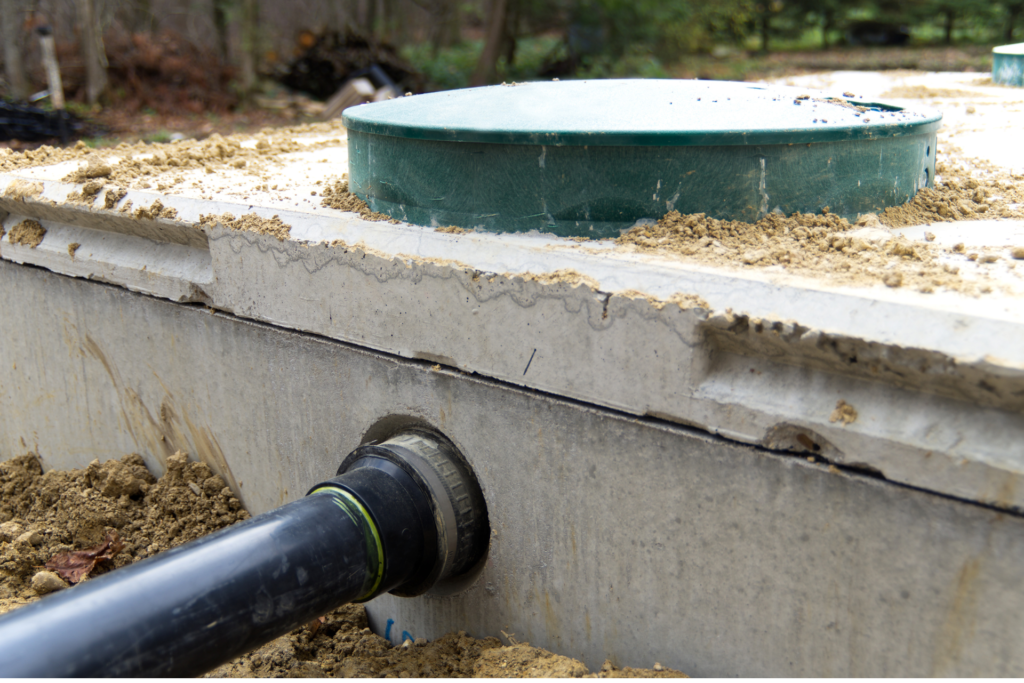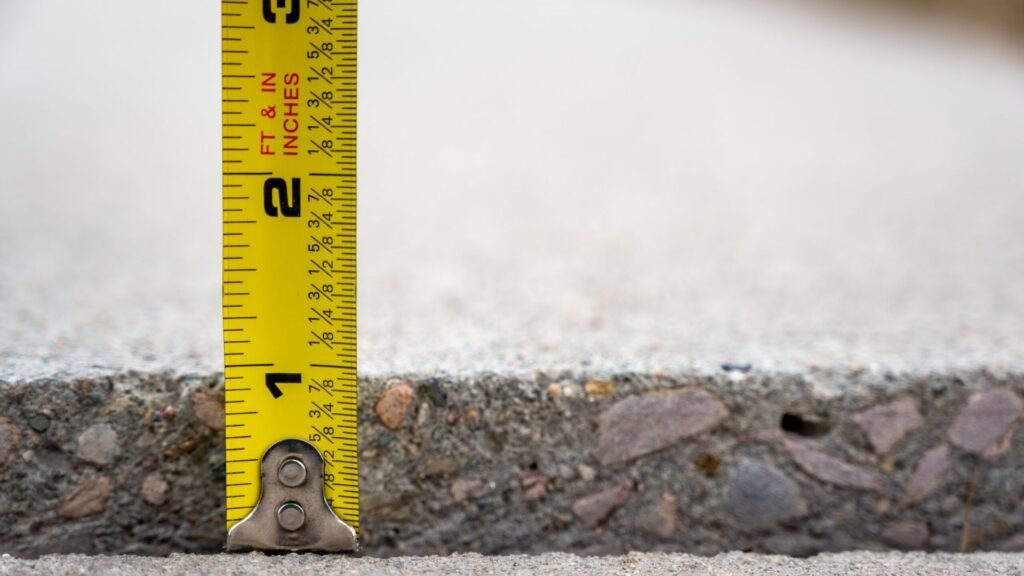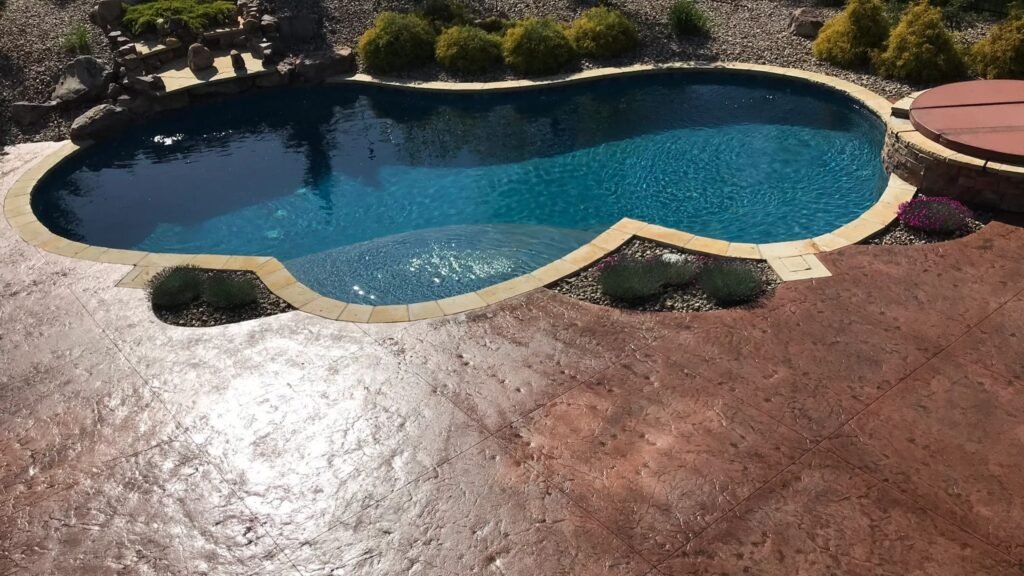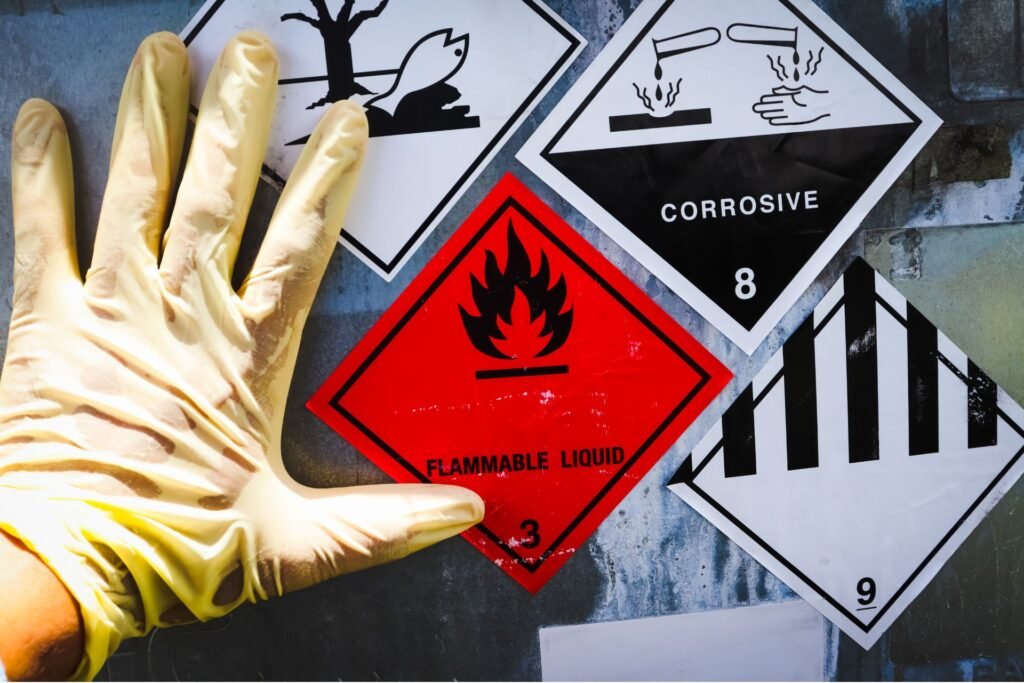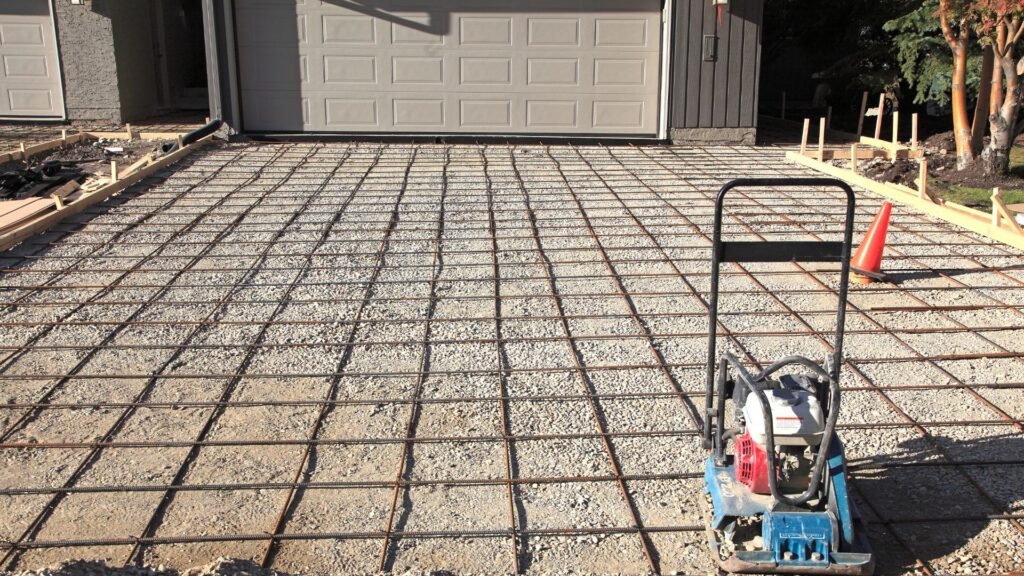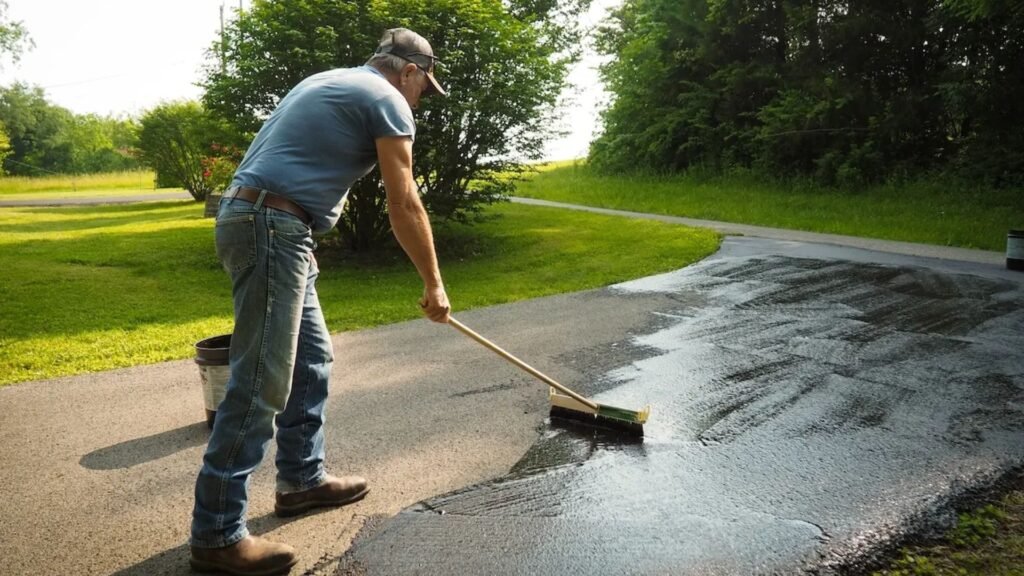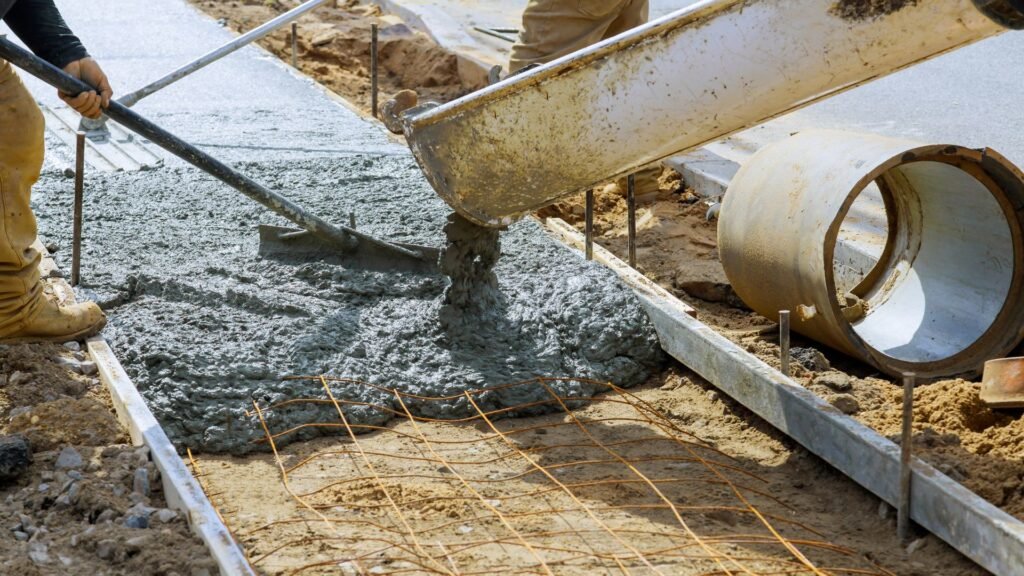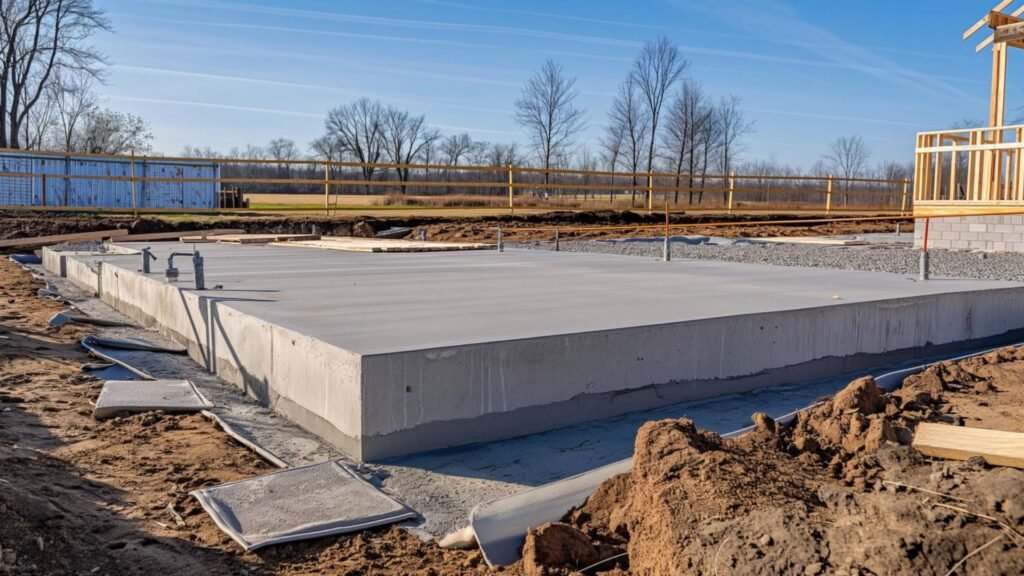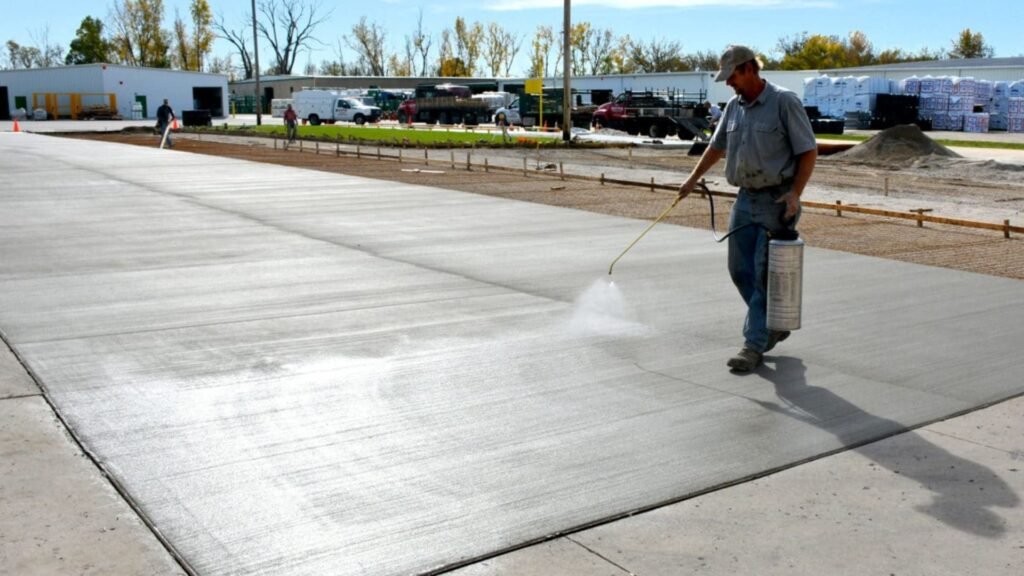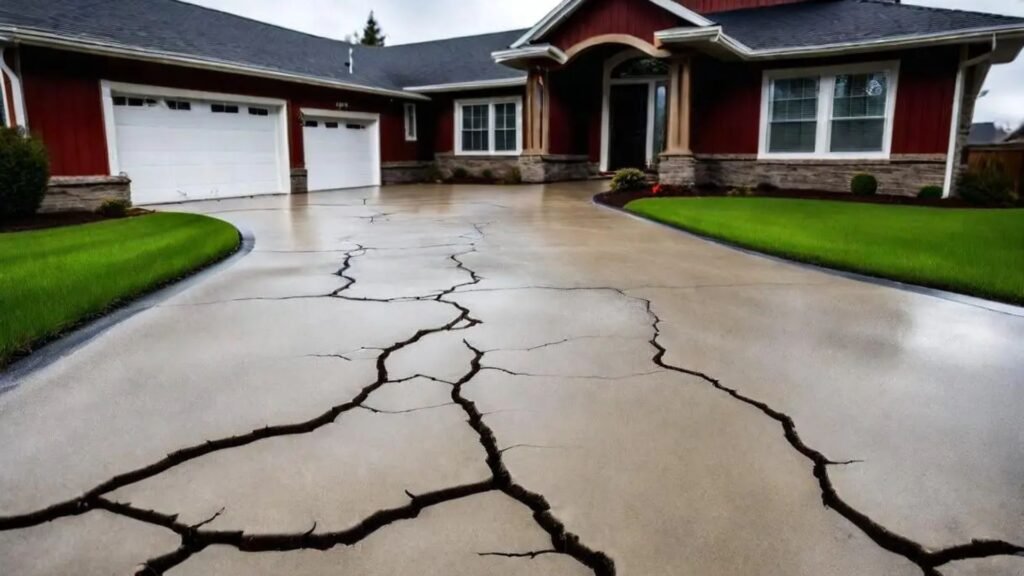Welcome to your comprehensive guide on concrete septic tank prices in New Zealand! If you’re living in a rural area or planning a property where access to the central sewer system isn’t available, a septic tank becomes an essential part of your wastewater management solution. In this guide, we’ll break down everything you need to know about concrete septic tanks, from understanding how they work to exploring the factors that influence their cost. Whether you’re weighing the pros and cons of different materials or trying to navigate local regulations, this article will help you make an informed decision for your property while ensuring you stay compliant with New Zealand’s septic system standards. Let’s dive into the details of concrete septic tank prices, installation processes, and long-term maintenance, so you can choose the best solution for your needs.
On average the concrete septic tank prices in New Zealand typically range from NZD 3,000 to NZD 15,000, depending on the size, location, and complexity of installation. Smaller domestic tanks cost around NZD 3,000 to NZD 6,000, while larger or commercial-grade tanks may exceed NZD 10,000. Factors such as transportation, soil conditions, and local council regulations can also influence the final cost. While concrete tanks may have a higher upfront cost compared to plastic alternatives, they offer superior durability and a longer lifespan, making them a valuable long-term investment.
Table of Contents
What Are Septic Tanks, And How Do They Work
A septic tank is a critical component of a home or building’s wastewater management system, particularly in areas not connected to the municipal sewer network. Essentially, septic tanks treat and manage household waste and wastewater, ensuring that it is processed safely before it is released into the surrounding environment. Septic tanks serve rural properties, farms, or homes located outside city limits, where direct access to a centralized sewer system is unavailable.
Explanation of Septic Systems
At its core, a septic system is designed to separate solid waste from liquid waste and treat the wastewater. When waste enters the septic tank from the home’s plumbing, the heavier solids settle at the bottom of the tank, forming a layer of sludge. The lighter materials, such as oils and grease, float to the top, creating a scum layer. In between these two layers is clarified water, or effluent, which exits the tank and is slowly released into the soil through a drain field, where natural filtration processes help purify the wastewater.
The septic tank relies on bacterial activity to break down the waste materials, turning the sludge into a semi-solid state that remains at the bottom of the tank until it’s pumped out. Regular maintenance, including routine pumping, is essential to ensure that the system continues to function effectively and does not overflow or cause environmental contamination.
Different Types of Septic Tanks
Septic tanks come in various materials, with the three most common being concrete, plastic, and fiberglass.
- Concrete septic tanks: are among the most popular, especially in countries like New Zealand. Their strength and durability make them ideal for long-term use. Due to the density and weight of concrete, these tanks are less likely to float if water levels around them rise, making them particularly well-suited for regions with fluctuating water tables.
- Plastic septic tank: are lightweight, easy to install, and generally more affordable than concrete options. However, they may be prone to damage over time and can shift if the surrounding soil becomes saturated with water.
- Fiberglass septic tanks: share many of the benefits of plastic tanks in terms of weight and ease of installation but tend to be more durable and resistant to cracking. However, like plastic tanks, they may also be susceptible to shifting in high-water environments.
Concrete vs. Plastic Septic Tanks
When deciding between concrete and plastic septic tanks, several factors should be considered, such as durability, cost, and maintenance.
- Durability: Concrete septic tanks generally have a longer lifespan due to their sturdy construction. They are highly resistant to damage from external pressures, such as heavy vehicles or soil movement. On the other hand, plastic tanks, while durable in their own right, are more vulnerable to cracking or warping over time. Concrete tanks are particularly advantageous in areas where the water table fluctuates, as they are less likely to float or shift.
- Cost: While concrete septic tanks tend to have a higher upfront cost due to the material and installation complexity, they often prove to be more cost-effective in the long run. Plastic septic tanks, while cheaper and easier to install initially, may require more frequent maintenance or even replacement if damaged.
- Maintenance: Both types of septic tanks require regular maintenance, such as pumping and inspections. However, concrete tanks generally demand less frequent repairs due to their sturdy construction. Plastic tanks may need closer monitoring for potential leaks, cracks, or shifting, especially in areas prone to heavy rainfall or flooding.
The choice between a concrete and plastic septic tank largely depends on the specific needs of your property and environmental conditions. Concrete tanks are an excellent long-term investment in durability and performance, making them a top choice in New Zealand, particularly in areas with challenging terrain or high water tables. However, plastic tanks offer a more budget-friendly option that is still effective for many residential applications. By understanding the types and workings of septic tanks, property owners can make informed decisions about the best system for their needs, ensuring long-term efficiency and sustainability in managing wastewater.

Factors Influencing Concrete Septic Tank Prices In NZ
Several factors can influence the cost of concrete septic tanks in New Zealand, making it important for buyers to understand how each aspect affects pricing. Below is an in-depth explanation of the key variables that come into play when determining the price of a concrete septic tank.
Size of the Tank
The size of the septic tank is one of the most significant factors affecting its price. Septic tanks come in various sizes to cater to different property needs.
- Small Homes: For smaller homes with fewer occupants, a smaller septic tank is often sufficient. These smaller tanks require less material to manufacture, resulting in a lower upfront cost.
- Large Properties: For larger homes or properties with greater water usage, larger tanks are necessary. These tanks are more expensive due to the increased amount of concrete and the need for stronger structural integrity to handle higher volumes of waste.
- Commercial Use: For commercial properties, the demand for even larger septic tanks increases significantly. These tanks are built to manage the waste generated by multiple people or industrial processes, which translates into higher costs.
When choosing a septic tank size, it’s essential to consider the property’s needs, as an undersized tank could lead to frequent maintenance and higher long-term expenses.
Location & Installation Complexity
The installation of a concrete septic tank isn’t just about buying the unit itself. Where your property is located and the complexity of installation play a vital role in determining the overall cost.
- Accessibility: If your property is in a remote or hard-to-reach area, it might require additional equipment or labor to install the septic tank, driving up costs.
- Soil Type: The type of soil can also affect installation. For instance, rocky or clay-based soils might require more excavation work, making the process more labor-intensive and expensive. On the other hand, sandy or loamy soils typically make installation easier and cheaper.
- Local Regulations: Different regions in New Zealand may have their own building codes or regulations regarding septic tank installation. Some areas may require more rigorous inspections or specific types of installations to meet environmental standards, adding to the cost of both the tank and its installation.
Material & Manufacturing Quality
The quality of the concrete and the manufacturing process can greatly impact both the price and the long-term value of a septic tank.
- High-Quality Concrete: Septic tanks built from high-quality, durable concrete tend to be more expensive, but they offer significant advantages. Stronger tanks are more resistant to cracking, leaks, and other forms of damage, which can save homeowners considerable amounts of money in maintenance and repairs over time.
- Manufacturing Standards: Tanks that are constructed to meet or exceed local building standards are often priced higher due to the additional processes involved in ensuring their durability and functionality.
Investing in a high-quality septic tank may require a higher initial outlay but can result in long-term savings by reducing the likelihood of system failures or the need for replacement.
Transport Costs
The location of the buyer relative to the manufacturer or supplier can significantly affect the price of a septic tank.
- Proximity to Manufacturer: If you’re located close to the septic tank manufacturer, transportation costs are minimal. However, for buyers in remote areas or on the South Island, the cost of transporting a large, heavy concrete tank can increase substantially.
- Shipping Logistics: For particularly large tanks, special vehicles or even cranes may be required to deliver and position the tank on-site, further adding to transport and installation expenses.
Considering transport costs is especially important when comparing quotes from different suppliers, as a lower upfront price may be offset by higher delivery fees.
Local Regulations & Permits
New Zealand has stringent rules and regulations governing the installation of septic tanks, and these can vary by region.
- Permits: Many local councils require permits for septic tank installation, and the costs associated with obtaining these permits can vary. Additionally, some regions may have specific requirements related to environmental protection, which could increase the cost of permits and inspections.
- Compliance: Depending on the area, you may also need to comply with particular regulations, such as using eco-friendly designs or installing additional filtration systems. While these regulations are essential for protecting New Zealand’s environment, they can add to the overall cost of the project.
It’s important to check with local authorities before purchasing a septic tank to ensure you understand the requirements and can budget for any additional costs associated with compliance. Several factors influence the price of a concrete septic tank in New Zealand, including the size of the tank, location, installation complexity, material quality, transport costs, and local regulations. By understanding these elements, buyers can make informed decisions that balance their budget with the long-term reliability and efficiency of their septic system.

Typical Price Range For Concrete Septic Tanks In New Zealand
When considering the installation of a septic system in New Zealand, one of the first questions that comes to mind is, How much will it cost? While the total investment can vary depending on the size of the tank, its materials, and the complexity of the installation, concrete septic tanks are often the preferred choice due to their strength and longevity. In this section, we’ll dive into the typical price range for concrete septic tanks in New Zealand, along with how they compare to alternative materials like plastic and fiberglass. We’ll also take a look at ongoing maintenance costs to provide you with a clear understanding of the long-term investment.
Small Domestic Systems
For a smaller household, which generally includes 1-3 bedrooms, the size of the septic tank required will typically range between 3,000 to 5,000 liters. In New Zealand, the price for a concrete septic tank of this size can range from approximately NZD $2,500 to $5,000, excluding installation costs. This estimate covers the tank itself, with additional charges for site preparation, excavation, and plumbing installation, which can add several thousand dollars depending on the complexity of the site.
Concrete tanks in this range are ideal for small domestic systems, as they are built to withstand the stresses of regular use while remaining cost-effective over the long term.
Larger Domestic or Commercial Systems
For larger households, properties with multiple dwellings, or light commercial uses, the capacity of the septic tank will need to be significantly higher, typically between 6,000 to 10,000 liters or more. For these larger systems, you can expect concrete tank prices to fall between NZD $5,500 and $10,000, again excluding installation costs.
For commercial or multi-dwelling residential projects, prices can climb higher depending on the specific requirements, but the strength and durability of concrete ensure that these larger systems will provide reliable service for decades. Investing in a larger, high-quality concrete septic tank can help avoid future headaches like system failures or the need for premature replacement.
Comparison to Other Materials
When comparing the costs of concrete septic tanks to those made of plastic or fiberglass, it’s important to consider both the initial investment and the long-term benefits. Here’s a quick side-by-side comparison.
- Concrete Tanks: As mentioned, the typical price for a concrete septic tank can range from NZD $2,500 to $10,000, depending on size. Concrete tanks are known for their durability, longevity (up to 50 years or more), and ability to handle the stress of being underground without risk of collapse or deformation.
- Plastic Tanks: Plastic septic tanks tend to be cheaper upfront, with prices ranging from NZD $1,500 to $4,000 for comparable sizes. However, they are more prone to damage from environmental factors, such as soil pressure or exposure to the elements, making them more likely to require repairs or replacement over time.
- Fiberglass Tanks: Fiberglass tanks are often priced between NZD $2,500 and $6,000. Like plastic tanks, they are lightweight and easier to install. However, they may not provide the same structural integrity as concrete, particularly in areas with heavy soil or frequent ground movement.
In terms of overall value, concrete septic tanks offer greater strength and a longer lifespan, making them a better long-term investment despite their higher upfront cost.
Ongoing Maintenance Costs
While concrete septic tanks are designed to last for decades, they still require regular maintenance to function properly and meet environmental regulations. In New Zealand, you can expect ongoing maintenance and inspection costs to range from NZD $200 to $500 per year, depending on the size of the tank and the frequency of use.
This includes the cost of routine inspections, pumping out the tank (which is typically needed every 3-5 years), and any minor repairs that may be required over time. Concrete tanks are less likely to suffer from damage compared to plastic or fiberglass alternatives, which can significantly reduce long-term maintenance costs.
Concrete septic tanks in New Zealand typically range in price from NZD $2,500 to $10,000 depending on size and intended use. While plastic and fiberglass tanks might offer a cheaper upfront cost, concrete provides superior durability, longevity, and resistance to environmental stress. Additionally, ongoing maintenance costs for concrete systems remain manageable, making them a sound long-term investment for both residential and commercial properties.

Septic Tank Installation
Septic tanks play a crucial role in managing wastewater in homes that aren’t connected to the main sewage system. If you’re considering installing a septic tank on your property in New Zealand, it’s essential to understand the process, costs involved, and the importance of hiring professionals. Here’s a detailed guide to help you navigate what to expect during septic tank installation.
Step-by-Step Installation Process
The installation of a septic tank is a multi-step process, and each step is crucial to ensuring your system works efficiently and remains compliant with New Zealand regulations. Here’s a simple breakdown of the process.
- Site Assessment and Permits: Before any digging begins, a thorough site assessment is carried out. This involves evaluating the soil type, groundwater levels, and the layout of your property to determine the best spot for the septic tank. New Zealand regulations require homeowners to obtain permits before installation, ensuring the system meets environmental and safety standards.
- Excavation and Ground Preparation: Once the site is approved, the excavation process begins. This involves digging the required space for the septic tank and ensuring the ground is level and stable. The size of the excavation depends on the size of the tank and the volume of wastewater your household produces.
- Tank Installation: After the site is prepared, the septic tank (usually made from concrete or fiberglass) is carefully lowered into the excavated area. At this stage, it’s crucial that the tank is installed with precision to avoid shifting or settling over time, which could cause damage.
- Piping and Drainage Field: The next step involves connecting the septic tank to your home’s plumbing system. Piping is installed to direct wastewater from your home to the tank, and an outlet pipe allows treated water to flow into the drainage field. Proper installation of the drain field is essential for dispersing treated wastewater safely into the ground.
- Inspection and Final Testing: Once everything is in place, the system undergoes a final inspection to ensure it complies with local regulations. After passing the inspection, the installation is considered complete. A final test ensures that the tank and drainage system are functioning as expected.
- Backfilling and Landscaping: Finally, the excavated area is backfilled with soil, and any necessary landscaping is carried out to restore the property to its original condition.
Average Installation Costs
The cost of installing a septic tank in New Zealand can vary based on factors such as location, soil type, and the size of the tank required. Here’s a general breakdown of the typical costs involved.
- Excavation Costs: This depends on the difficulty of the excavation, including soil conditions and accessibility. On average, expect to pay around $2,000 to $4,000 for excavation services.
- Septic Tank Costs: Concrete septic tanks are the most common in New Zealand, and their price can range from $3,000 to $5,000 depending on the size and brand.
- Labor Costs: Installation typically requires skilled professionals to handle the digging, installation, and connection of pipes. Labor costs generally fall between $2,000 and $4,500.
- Additional Equipment and Materials: Depending on your site, additional materials such as gravel for the drain field and piping can add another $1,000 to $2,000 to the overall cost.
In total, you’re looking at an installation cost of between $8,000 and $15,000 for a complete septic tank system, though this can vary depending on specific site requirements and the complexity of the job.
DIY vs Professional Installation
While some homeowners may consider a DIY septic tank installation to save money, it’s important to understand the risks involved. Installing a septic tank is a complex task that requires specialized knowledge and equipment. Here’s why hiring a professional is typically the better option.
- Compliance with NZ Regulations: Septic tank installation in New Zealand must meet strict environmental and building regulations. Professionals are familiar with these requirements and can ensure your system is compliant, avoiding costly fines or the need for reinstallation.
- Correct Installation: A septic tank must be installed with precision to prevent future issues like leaks, tank shifting, or system failures. Professional installers have the experience and equipment to get the job done right the first time.
- Health and Safety: Handling wastewater can pose significant health risks. Professionals are trained to handle these risks, ensuring that the installation process is carried out safely and hygienically.
- Long-Term Savings: While a DIY installation might seem like a way to cut costs, mistakes made during the installation process can lead to expensive repairs or replacements down the line. Investing in professional installation ensures the longevity of your septic system, saving you money over time.
Installing a septic tank is a significant investment that requires careful planning and professional execution. By understanding the installation process, the costs involved, and the risks of DIY installation, you can make an informed decision that will ensure your septic system functions efficiently for years to come. Whether you’re building a new home or upgrading an existing system, working with experienced professionals in New Zealand is the best way to guarantee a safe, reliable, and regulation-compliant septic tank installation.

Maintenance And Lifespan Of Concrete Septic Tanks
Concrete septic tanks are a crucial part of many wastewater systems, offering durability and reliability. However, like any component of a home or property, they require proper care and attention to ensure they perform optimally for as long as possible. In this section, we’ll explore how to maintain concrete septic tanks, the expected lifespan of these systems, and potential repair costs in New Zealand.
Regular Maintenance Tips
To ensure your concrete septic tank functions effectively and lasts its full lifespan, regular maintenance is essential. Below are some key tips for keeping your septic system in good shape.
- Routine Inspections: It’s advisable to have your septic tank inspected every 1-3 years by a professional. This will help identify any potential issues, such as cracks or blockages, before they become serious problems.
- Pumping and Cleaning: Septic tanks should be pumped out every 3-5 years, depending on usage. If a tank is not cleaned out regularly, it can become clogged, leading to system failures and costly repairs.
- Monitor Water Usage: Overloading the tank with excess water can lead to issues. Be mindful of water use in your home by spreading out laundry loads and fixing any leaking faucets to prevent overburdening the system.
- Avoid Flushing Non-Degradable Items: Only human waste and toilet paper should be flushed down the toilet. Items like sanitary products, diapers, or wipes can cause blockages in the septic system, leading to costly repairs.
- Protect Your Drain Field: The drain field is an essential part of the septic system. Avoid planting trees or shrubs near it, as tree roots can grow into the pipes and cause blockages. Additionally, heavy machinery or vehicles should not be driven over the drain field to prevent compacting the soil and damaging the pipes.
- Be Cautious with Chemicals: Certain household chemicals can harm the bacteria that break down waste in your septic tank. Avoid pouring harsh chemicals like bleach, paint, or pesticides down your drains, as this can disrupt the natural bacterial balance and lead to system inefficiencies.
Expected Lifespan of Concrete Septic Tanks
When maintained properly, concrete septic tanks are designed to last anywhere from 40 to 50 years or even longer. However, the actual lifespan can vary based on several factors, including.
- Quality of Installation: A professionally installed tank that meets local standards and regulations is more likely to have a longer lifespan.
- Soil Conditions: Certain soil types, such as highly acidic soils, can erode concrete over time. If you live in an area with these soil conditions, your tank may not last as long unless it has been treated or lined to protect it.
- Maintenance: As mentioned earlier, regular pumping, inspections, and avoiding harmful practices like flushing non-biodegradable items will significantly extend the life of your septic tank.
- Climate and Weather Conditions: Extreme weather, such as heavy rainfall or flooding, can stress your septic system. In New Zealand, areas with high water tables or frequent flooding may see tanks deteriorate more quickly if proper precautions aren’t taken.
Repair Costs in New Zealand
Despite proper maintenance, repairs may be needed over the lifespan of a concrete septic tank. Here’s a general overview of potential repair costs in New Zealand.
- Crack Repairs: If cracks develop in the tank, they can often be repaired using a concrete sealant. Minor cracks might cost between $500 and $1,000 to repair, but larger issues could require more extensive work, potentially costing several thousand dollars.
- Tree Root Removal: If tree roots invade your septic system, clearing them can cost between $800 and $2,500, depending on the extent of the damage. In some cases, pipes or parts of the system may need to be replaced.
- Pipe or Drain Field Repairs: If the pipes leading to the tank or the drain field become clogged or damaged, repairs could range from $1,500 to $5,000, depending on the extent of the work required. Drain field replacements or repairs are typically more expensive than other fixes due to the labor involved.
- Full Tank Replacement: In rare cases, where a septic tank has deteriorated significantly or has been improperly installed, a full replacement may be necessary. Replacing a septic tank in New Zealand can range from $10,000 to $30,000, depending on the size of the tank and the complexity of the installation.
Concrete septic tanks are a durable and long-lasting solution for waste management, but they need regular attention to reach their full potential lifespan of 40-50 years. Simple practices like scheduling routine inspections, avoiding chemical damage, and pumping the tank on time can make a significant difference. While repairs might be inevitable over time, staying proactive with maintenance can minimize costs and extend the life of your system.

Key Benefits Of Choosing A Concrete Septic Tank In NZ
When it comes to selecting the right septic tank for your property in New Zealand, concrete septic tanks stand out for several reasons. Whether you are building a new home or upgrading an existing system, here are the top benefits that make concrete septic tanks the preferred choice for many.
Durability
Concrete septic tanks offer unmatched durability compared to plastic or fiberglass alternatives. This strength comes from the nature of concrete itself, which is incredibly robust and able to withstand significant pressure. Over time, plastic tanks can warp, crack, or even collapse under the weight of the soil, especially in areas prone to heavy rainfall or flooding. Fiberglass, while more rigid than plastic, can also become brittle and crack, especially when exposed to temperature fluctuations.
In contrast, concrete septic tanks are built to last for decades, handling not only the weight of the surrounding earth but also any environmental stresses, like ground movement or heavy vehicle traffic. This makes them a reliable choice, reducing the likelihood of needing costly repairs or premature replacements.
Environmental Considerations
Concrete septic tanks are an environmentally friendly option for managing wastewater. One of the biggest environmental concerns with septic systems is the potential for leakage, which can contaminate soil and groundwater. Plastic and fiberglass tanks are more prone to cracking, increasing the risk of leakage over time. Concrete, however, is much less susceptible to such damage, meaning there’s a lower chance of harmful substances leaking into the environment.
Furthermore, concrete is a natural material, and its production typically has a lower environmental impact compared to synthetic alternatives. Unlike plastic, which is made from petroleum products, concrete is made from abundant raw materials such as limestone, clay, and sand. This not only makes it a greener option but also a more sustainable one.
Value for Money
While the upfront cost of a concrete septic tank may be higher than plastic or fiberglass options, it’s important to consider the long-term savings. The durability and low maintenance requirements of concrete septic tanks mean fewer repairs and replacements, translating into lower overall costs throughout the life of the system.
Concrete tanks also offer better resistance to environmental factors like temperature changes and ground movement, which further reduces the likelihood of costly repairs. By investing in a concrete septic tank now, you’re saving yourself the future headaches and expenses associated with more fragile materials.
In addition, concrete septic tanks have a longer lifespan, often lasting upwards of 40 years or more with proper care. This means you won’t need to worry about replacing your tank anytime soon, making it a financially sound choice for homeowners who want peace of mind and long-term value. For homeowners in New Zealand, choosing a concrete septic tank is a decision that offers numerous advantages. The durability, environmental benefits, and long-term cost savings make concrete a superior choice over plastic or fiberglass alternatives. By opting for a concrete septic tank, you’re investing in a system that will last for decades, protect the environment, and save you money in the long run.

Navigating Septic System Regulations In New Zealand
When planning to install a septic system in New Zealand, understanding the regulations at both the national and local levels is essential. The country has a structured regulatory framework to ensure that septic systems are installed and maintained in ways that safeguard public health and the environment. Whether you are building a new home or upgrading an existing system, navigating these regulations is crucial for a smooth and hassle-free process.
Overview of National and Local Regulations
New Zealand’s septic system regulations are governed by a combination of national and local council rules. At the national level, the Resource Management Act (RMA) sets the broader framework for managing environmental impacts, including wastewater management. Septic systems fall under this category due to their potential to impact groundwater and surrounding ecosystems.
However, local councils play a key role in administering and enforcing these regulations. Each region in New Zealand may have specific rules tailored to the environmental conditions and population density of the area. For example, rural areas with more space may have different requirements compared to urban or coastal regions where the risk of groundwater contamination is higher.
It’s vital to consult both the national guidelines and your local council’s regulations before proceeding with any septic tank installation. Failing to do so can lead to costly delays, fines, or even being required to remove or modify a non-compliant system.
Consent and Compliance Requirements
Installing a septic system in New Zealand typically requires obtaining resource consent, especially if your property is located near sensitive areas such as lakes, rivers, or coastal zones. A resource consent ensures that your septic system meets all environmental and public health standards set by the council.
The process of obtaining resource consent involves providing detailed information about the type of system you plan to install, the size of the tank, and the soil and drainage conditions of your property. Some councils may require an environmental impact assessment to ensure that the system will not negatively affect local waterways or ecosystems.
Additionally, compliance with the Building Act and specific regional environmental policies is essential. This includes ensuring that the septic system design, construction, and maintenance meet high standards of safety and efficiency. Systems must be appropriately sized for the household’s wastewater output and must be installed by certified professionals to ensure long-term functionality.
Failing to meet these requirements can result in significant costs down the road. If the system is found to be inadequate or improperly installed, you may be required to replace or upgrade it to meet current standards.
Penalties for Non-Compliance
Non-compliance with septic system regulations in New Zealand can lead to various penalties, ranging from fines to legal action. For instance, if you install a septic system without the necessary resource consent, your local council has the authority to impose hefty fines or issue a removal order, forcing you to dismantle the system and start the process over.
Environmental breaches, such as septic tank leaks or contamination of nearby water sources, can attract even more severe consequences. Under the Resource Management Act, individuals or companies responsible for such violations may face prosecution, with penalties including substantial fines or even imprisonment for severe cases of environmental harm.
In addition to financial penalties, non-compliance can also affect the value of your property. If your septic system is found to be illegal or non-compliant during a property sale, it can deter potential buyers and reduce the market value of your home.
Staying informed and compliant with both national and local regulations not only ensures that your septic system functions properly but also protects you from legal and financial risks.
Always work with certified professionals and consult your local council to navigate the regulations effectively, ensuring a sustainable and hassle-free septic system installation.
By understanding and adhering to these rules, homeowners in New Zealand can enjoy a safe, eco-friendly septic system that meets both personal needs and environmental standards.

Where To Buy Concrete Septic Tanks In New Zealand
If you’re planning to purchase a concrete septic tank in New Zealand, knowing where to buy and what to look for is essential. A septic tank is a significant investment in your property, so it’s important to ensure you’re getting a quality product from a reliable supplier. In this guide, we’ll explore the top suppliers in New Zealand, key questions to ask before buying, and the differences between purchasing from online or local suppliers.
Reputable Suppliers of Concrete Septic Tanks in New Zealand
Choosing a reliable supplier is the first step in making sure your septic system works efficiently for years to come. Here are a few of the most trusted concrete septic tank manufacturers and suppliers in New Zealand.
- Hynds: Hynds is a leading provider of concrete and drainage solutions across New Zealand. They offer a range of concrete septic tanks designed to meet both residential and commercial needs. You can explore their offerings on their official website here: Hynds Concrete Products.
- APD: APD is well-known for its high-quality precast concrete products. Their concrete septic tanks are built to last, and they offer various sizes to suit different properties. APD also emphasizes environmentally friendly practices, making them a great choice if sustainability is a priority for you.
- Maccaferri: Maccaferri offers custom-built concrete septic tanks designed for New Zealand’s unique environmental conditions. They’re known for their durable tanks and responsive customer service, ensuring that you get exactly what you need for your specific project.
- Waterflow NZ: Specializing in wastewater management solutions, Waterflow NZ offers a variety of septic tanks and installation services. They have a strong focus on providing complete systems that work seamlessly for their customers.
- Rocla: Rocla offers a range of robust concrete septic tanks tailored for different property sizes and uses. With a history of reliability, their products are widely regarded for their long-term durability.
Questions to Ask Your Concrete Septic Tank Supplier
Before making a purchase, it’s crucial to ask your supplier a few key questions. This will help you understand exactly what you’re getting and avoid any surprises down the line. Here are some important questions to consider.
- What warranties and guarantees do you offer?
A quality septic tank should come with a solid warranty. Be sure to ask about the warranty period and what exactly is covered, whether it’s just the tank itself or if installation and any associated components are included. - Do you provide installation services?
Some suppliers offer comprehensive packages that include installation. Having the tank installed by professionals ensures it’s done correctly and can save you from potential headaches. Ask if the supplier offers this service or if they can recommend trusted installers. - What are the delivery options and costs?
Septic tanks are large and heavy, so delivery can be a significant cost factor. Make sure you ask about delivery options and the cost involved. Some suppliers may offer free or discounted delivery within certain regions. - Are there any ongoing maintenance services available?
In addition to the tank itself, it’s a good idea to ask about maintenance. Regular inspections and servicing can prolong the life of your septic system, so check if your supplier offers these services or can recommend a reliable provider. - What certifications do the tanks have?
Ensuring that the tank meets New Zealand standards is crucial. Ask for any relevant certifications that demonstrate compliance with local regulations and industry standards. This can give you peace of mind regarding the quality and durability of the product.
Online vs. Local Suppliers
When purchasing a concrete septic tank, you’ll have the option to buy from online retailers or local suppliers. Each has its own set of advantages and drawbacks, and your decision will depend on factors like convenience, cost, and after-sales support.
Online Suppliers
Pros
- Wider Selection: Online suppliers often offer a more extensive range of products, allowing you to compare different models and prices easily.
- Convenience: Shopping online allows you to research and purchase from the comfort of your home.
- Potentially Lower Prices: Some online suppliers may offer competitive pricing due to lower overhead costs.
Cons
- Delivery Fees: Since septic tanks are heavy, delivery can be expensive. While some online suppliers offer free delivery, it may not apply to all regions.
- Lack of Personal Assistance: With online shopping, you may miss out on the personalized customer service you would get in-store. This can be especially important for complex purchases like septic tanks, where guidance on installation and maintenance is crucial.
- Longer Wait Times: Depending on your location, delivery from an online supplier may take longer, especially if the supplier is based outside of your region.
Local Suppliers
Pros
- Personalized Service: Buying from a local supplier allows you to ask questions face-to-face, which can be invaluable for ensuring you get the right product for your needs.
- Easier After-Sales Support: If you encounter any issues with your tank, having a local supplier means you can access support more quickly and easily.
- Faster Delivery: Local suppliers can often deliver the tank to your property faster, and some may even offer installation as part of the package.
Cons
- Higher Prices: Local suppliers may have higher prices compared to online retailers due to the overhead costs associated with running a physical store.
- Limited Selection: Depending on the supplier, there may be fewer options available compared to online stores.
When it comes to purchasing a concrete septic tank in New Zealand, there are several reputable suppliers to choose from, each offering unique advantages. Make sure to ask the right questions before purchasing to ensure you get a quality product with proper installation and support. Whether you opt for the convenience of an online supplier or the personalized service of a local provider, the most important thing is to choose a tank that meets your specific needs and complies with local regulations. With a bit of research, you can find the perfect septic tank for your property that will last for years to come.

FAQs: About Concrete Septic Tank Prices NZ
What factors influence the cost of a concrete septic tank in New Zealand?
The cost of a concrete septic tank in NZ is influenced by several factors, including the size of the tank, the complexity of installation, transportation costs, the quality of the concrete, and local regulations. Larger tanks or tanks installed in areas with difficult access or poor soil conditions may increase the overall price. Local regulations may also add costs for permits and compliance.
What is the typical price range for concrete septic tanks in NZ?
The price range for concrete septic tanks in New Zealand varies based on size and capacity. Small domestic tanks can range from NZD 3,000 to NZD 6,000, while larger or commercial-grade tanks may cost between NZD 8,000 to NZD 15,000 or more. Installation costs are separate and depend on the site and labor required.
How does a concrete septic tank compare to plastic or fiberglass alternatives?
Concrete septic tanks are generally more durable and long-lasting compared to plastic or fiberglass options. While concrete tanks may have a higher upfront cost, they tend to last longer (40-50 years with proper maintenance), are more resistant to damage from external forces, and can handle higher pressure. Plastic tanks, on the other hand, are lighter and easier to install but may have a shorter lifespan.
What is involved in installing a concrete septic tank?
Installing a concrete septic tank involves several steps, starting with a site assessment to determine the best location for the tank. Excavation follows, and the tank is then placed and connected to the property’s plumbing system. The installation may also include backfilling, leveling, and inspections to ensure compliance with local regulations. Professional installation is highly recommended due to the complexity and need for regulatory adherence.
Do I need a permit to install a septic tank in New Zealand?
Yes, in most cases, you will need a permit to install a septic tank in New Zealand. Requirements vary by region, but resource consents from local councils are often required, especially for systems near water sources or in sensitive environmental areas. Failing to obtain the necessary permits can lead to fines and require modifications to the system.
What are the long-term maintenance costs of a concrete septic tank?
Maintenance costs for a concrete septic tank include regular inspections, pumping, and cleaning. It’s recommended to pump the tank every 3-5 years, which can cost between NZD 300 and NZD 800, depending on the location and size of the tank. Proper maintenance is essential for prolonging the life of the tank and avoiding costly repairs.
How long does a concrete septic tank last?
A well-maintained concrete septic tank can last between 40 to 50 years. Factors that influence lifespan include the quality of the installation, the consistency of maintenance, soil conditions, and whether the tank is subject to heavy usage. Routine inspections and timely maintenance are crucial to maximizing the lifespan of the tank.
Can I install a septic tank myself, or do I need a professional?
While it is technically possible to install a septic tank yourself, it’s generally not recommended unless you have specific experience with such systems. Professional installation ensures that the tank is installed correctly and complies with local regulations. Improper installation could result in fines, system failure, or environmental damage, making professional help a worthwhile investment.
How often should I pump or clean my concrete septic tank?
It’s recommended to have your septic tank pumped and inspected every 3 to 5 years, depending on the size of the tank and the amount of usage. Regular pumping helps prevent overflow, clogs, and damage to the tank. Some larger or more frequently used systems may require more frequent maintenance.
Where can I buy concrete septic tanks in New Zealand?
Concrete septic tanks can be purchased from specialized suppliers and manufacturers across New Zealand. Reputable suppliers include companies that offer both manufacturing and installation services. It’s important to ask suppliers about delivery costs, warranties, and whether they offer after-sales support for installation and maintenance.
Conclusion
Deciding whether a concrete septic tank is the right choice for your property in New Zealand depends on several key factors that impact both the initial investment and long-term benefits. Concrete tanks are highly durable, resistant to cracking, and can last for decades when properly maintained, making them a smart investment despite their higher upfront cost compared to other materials like plastic or fiberglass. Factors such as the size of the tank, the complexity of installation, and site-specific conditions like soil type can also influence the total price. However, the durability, strength, and environmental sustainability of concrete tanks make them an excellent long-term solution for wastewater management. Whether you’re building a new home or upgrading an existing system, investing in a concrete septic tank offers peace of mind by reducing the need for frequent repairs and replacements. Before making your final decision, it’s crucial to consult with a local septic tank professional who can assess your property and provide an accurate quote tailored to your specific needs. Taking this step ensures that you make a well-informed choice, balancing cost, performance, and longevity for your septic system.
About the Author:
Mike Veail is a recognized digital marketing expert with over 6 years of experience in helping tradespeople and small businesses thrive online. A former quantity surveyor, Mike combines deep industry knowledge with hands-on expertise in SEO and Google Ads. His marketing strategies are tailored to the specific needs of the trades sector, helping businesses increase visibility and generate more leads through proven, ethical methods.
Mike has successfully partnered with numerous companies, establishing a track record of delivering measurable results. His work has been featured across various platforms that showcase his expertise in lead generation and online marketing for the trades sector.
Learn more about Mike's experience and services at https://theleadguy.online or follow him on social media:
